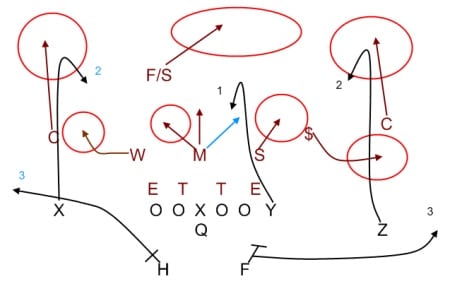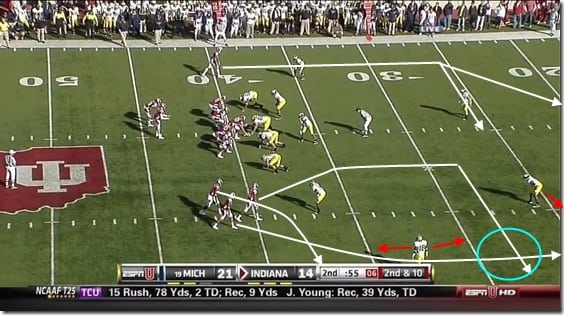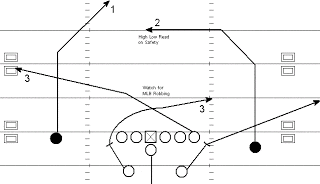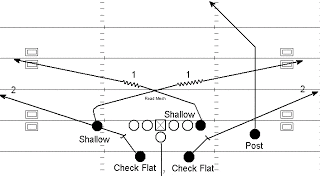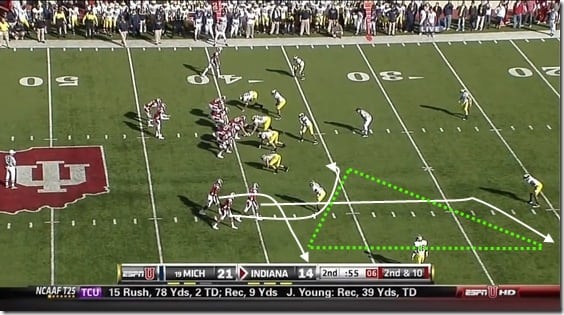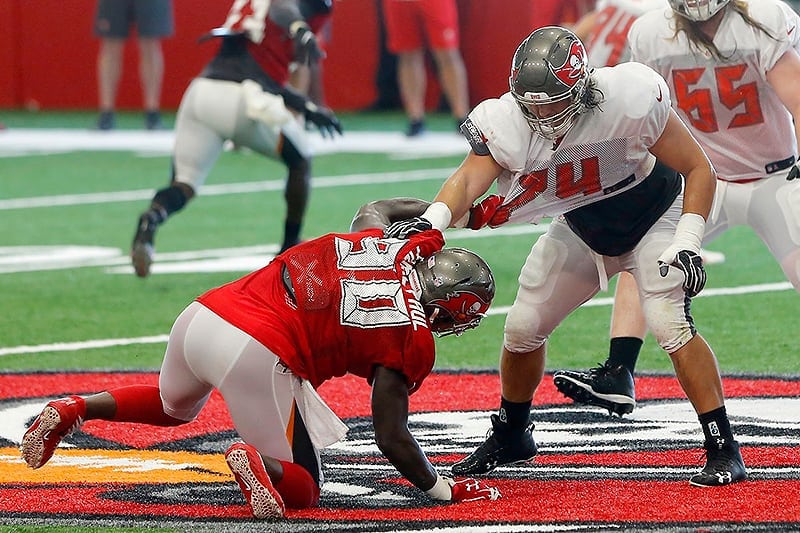Sikkema’s Stat of the Week
When I was in high school, we had the freedom to make our own class schedule. At the end of every school term, we’d meet with our guidance counselor and she’d go through some of the options we had when choosing when to take which classes the following year. There were obviously certain classes that you had to take at each grade level, but sometimes you’d have some freedom to choose which period you would take them in to feel like you had some say – not really.
When my sophomore year rolled around it was time to take geometry. I wasn’t the biggest fan of math. I was decent at it and made it all the way up to a calculus course my senior year (humble brag), but that was more on me knowing how to be good at school in general and less so good at math. We only had one geometry teacher at my school, so where a choice in instructor wasn’t an option, when you could take it was. I chose to take it right after lunch so most of the days we could all ease into the class, dilly-dally around a bit and learn as little as possible.
Here I am now at 27 years old covering football for a living and I sure wish I paid more attention back then. Why? Because passing in the modern NFL is about arithmetic (timing) and geometry (spacing).
Sid Gillman was football’s first math teacher. He transformed the game from the tough, heads-up, brute force rugby derivative it was into a beautifully orchestrated, well-thought-out, timing and spacing masterpiece that it has paved the way for today. Gillman was the first to implement concepts of timing between quarterbacks and receivers. He coached for many years in the NFL, most notably with the Philadelphia Eagles when Dick Vermeil was there, as they perfected the “pro-style” offense.
These were some notes from Gillman’s passing offense via Smart Football.
Timing of Pass:
- The timing of the delivery is essential. It is the single most important item to successful passing.
- Each route has its own distinct timing. As routes and patterns are developed on the field, the exact point of delivery will be emphasized.
- Take mental notes on the field on timing of the throw.
- If you cannot coordinate eye and arm to get the ball at it’s intended spot properly and on time, you are not a passer.
- Keeping the ball in both hands and chest high is part of the answer.
- Generally speaking, the proper timing of any pass is putting the ball in the air before, or as the receiver goes into his final break.
- If you wait until the receiver is well into his final move, you are too late.
Attacking Defenses:
- You must know the theory of all coverages. Without this knowledge, you are dead.
- You are either attacking man for man, or zone defense.
- Vs. Man for Man Defense, you are beating the Man. Vs. Zone Defense, you are attacking an Area.
- Not knowing the difference will result in stupid interceptions.
- Study your coverage sheets so that by merely glancing at a defense you know the total coverage design.
- Man for Man Defenses
a. Hit the single coverage man. This will keep you in business for a long time.
b. Stay away from receivers who are doubled short and long.
c. Do not throw to post if weak safety is free unless you are controlling him with another receiver, and even then it can be dangerous.
d. Flare action is designed to hold backers. If backers are loose, HIT flare man.
e. The secret to attacking Man for Man is to attack the single coverage man who is on his own with no help short or to either side.
f. You must know the individual weaknesses of our opponents and attack them.
g. There are many methods of dropping off by deep secondary men. Each method provides a weakness – know them. - Zone Defenses
a. To successfully attack zone defense, concentrate on attacking the slots (X-Z Curl, Y Curl, Cross Routes).
b. Flare action is a must to hold the backers close to the line to help open up the zones behind them. - Exact knowledge of defensive coverage and the patterns to take advantage of these is a must.
Summary:
- Spread the field horizontally and vertically with all 5 receivers
- Pass to set up the run (not the other way around)
- One-Back formations are a must.
Gillman divided his passing concepts into spacing concepts: horizontal stretch, vertical stretch and objective reads.
Horizontal Stretch
Zone defense is the most common coverage called in the NFL. There reason for this is because it’s easier to teach a group of players to collectively cover the field than it is to expect to have all-world athletes at most of your coverage positions to play man coverage effectively. The horizontal stretch, as the name implies, can beat zone defense by stretching the field out from sideline to sideline by putting as many receivers as you can on the field and allowing them to be as wide as possible, therefore stretching coverage gaps. The large the gaps, the easier it is to manipulate.
Typically zone yields better results because if one defender gets beat, the receiver will soon run into another defender’s area and can be covered that way. However, this can be exploited through certain movements. The main way you can do this is by by moving two or more receivers into a single defender’s zone, ensuring one receiver will be uncovered.
When you run a concept like an all curls concept, you force any team in Cover 3 or Cover 4 to try to cover three or more receivers with no enough bodies. If you know a team is running three or more players in deep zone, all curls and all slants can dink-and-dunk them to death.
Vertical Stretch
The vertical stretch can attack a zone defense similarly to a horizontal stretch, but instead of stretching the defense side to side, the vertical stretches the defense up and down the field.
The receivers in this concept will run routes on the same area of the field, but on different levels, one above the other. This causes the defender to either drop back and cover the deep route, or move up and cover the short, leaving one receiver open. This is also called “Hi/Lo Reads”.
As you can see in the screenshot above, on the right side of the field you have one receiver running a wheel route from the receiver position going all the way down the field, then you have another trailing him on an out route, and finally you have the inside receiver running a quick out. This forces the defense to cover three receivers with just two guys; an impossible task. It’s just a matter of the the quarterback seeing which player they choose not to cover.
Objective Reads
Objective Reads aren’t necessarily different from horizontal or vertical stretches in terms of concept, but rather than focus on overloading a zone, these are designed as “man beaters” due to a combination of route. The best example for this is the mesh concept.
But it’s when you combine variation of both horizontal and vertical that you can really get into some hard-to-cover stuff, and that’s where the geometry comes in.
The insight behind the triangle is that the horizontal and the vertical stretch are combined to create a single straightforward read for the quarterback that provides answers no matter what the defense presents.
A triangle design, as shown above, is built to, as its name suggests, give the quarterback three points of attack in one lane of sight. It allows the quarterback to attack the field vertically, horizontally or in a quick man beater, all within one side of the field. It’s used to keep things simple. When you can present a quarterback with a triangle of options that are spread and yet within a line of sight, you’ll likely have a favorable match-up in one of the three points of the shape.
Modern offensive concepts are designed to move the ball and score points, of course, but the goal is to make that job as simple as it can be. There were only three quarterbacks in the NFL that averaged more yards per attempt than Jameis Winston last seasons: Tom Brady, Drew Brees and Alex Smith. Brady makes sense because he’s the greatest of all time. Brees makes sense because the Saints running game was so good that them being a threat to run successfully every down gave them the ability to shoot the ball over the top at will. And Smith makes sense because Andy Reid is an Air Raid genius.
Winston’s numbers were a product of being down on the scoreboard, certainly, but also were a product of the Buccaneers running vertical concepts heavy in their game plans. I liked that. I’m a guy who thinks that unless you have a truly dominant run game you should be passing the ball early and often. It has the biggest payout for explosive and scoring plays, and the numbers just make sense to throw the ball more. But, I feel as though the Bucs made their vertical concepts too stretched and their spacing of Hi/Lo reads was not right.
I feel as though I didn’t see enough simplicity from the Bucs’ vertical attack in 2017. I thought they put a lot of stress on their offensive line last year, and Winston holding on to the ball, as he does, didn’t help.

Bucs head coach Dirk Koetter and OC Todd Monken – Photo by: Cliff Welch/PR
In 2018, I’d like to see the Bucs get back to the basics of arithmetic and geometry. I want to see mesh and dig concepts over the middle with guys like O.J. Howard, Adam Humphries and DeSean Jackson. I want to see Hi/Lo concepts vertical with Chris Godwin, Mike Evans and Cameron Brate. I want to see a triangle offense that doesn’t bring defenders together in a zone, but rather stretches them out in as quickly as a five-step drop. I can’t tell you how many times I felt like I saw the Bucs run a Hi/Lo concept, except the routes were too similar and it just turned out to be more defenders guarding the same route in succession. I also felt like the Bucs tried to run a lot of Hi/Lo reads, but with not enough receivers to one side.
Like Gillman stressed in his notes, knowing your opponent is everything. If you know their tendencies, you know their weakness, too. Brady, Brees and Smith are all artists in the pre-snap arena. Winston isn’t there yet. If you can get Winston to recognize things pre-snap like those guys do, you can see this Dirk Koetter offense get both vertical and simple. That’s what the Bucs need in 2018.
But that also has to be married with well-studied play calling, something we’ll discuss more on the second page.
Trevor Sikkema is the Tampa Bay Buccaneers beat reporter and NFL Draft analyst for PewterReport.com. Sikkema, an alumnus of the University of Florida, has covered both college and professional football for much of his career. As a native of the Sunshine State, when he's not buried in social media, Sikkema can be found out and active, attempting to be the best athlete he never was. Sikkema can be reached at: [email protected]

